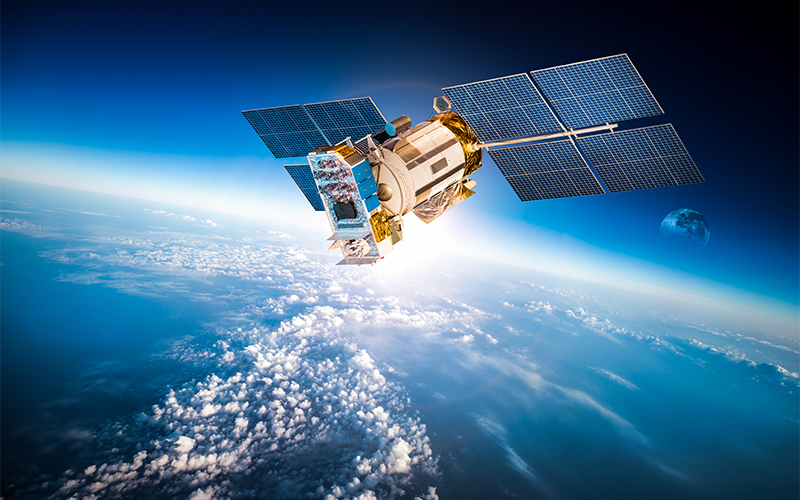Geospatial Data Services
Exploring geospatial artificial intelligence
Mapping, the process of diagrammatically representing physical features of the earth and the relationships between these features, has evolved exponentially over centuries. From primitive ways of documenting our surroundings to creating detailed paper maps for specific geographical features using cartographic symbols and now to building comprehensive digital geographic information systems (GIS), the methods we use to chart the world around us have advanced rapidly. Modern tools have enabled cartography to shift from physical drawings on flat surfaces to information-packed, interactive 3D digital models of our environment. With smart tools, technologies such as geospatial artificial intelligence (GeoAI) analyse spatial data and provide maps and simulations to predict future outcomes across various scenarios.
What is geospatial artificial intelligence?
Geospatial artificial intelligence is the amalgamation of geographic information systems (GIS) and intelligent technologies such as AI, machine learning, and deep learning. The application of AI in GIS analysis predicts the ‘future’ of a region. Businesses can employ GeoAI to create projections related to various aspects of an area, including human movement patterns, economic conditions, natural resource usage, pollution levels, and much more. These insights help them craft various business strategies, including market planning, selection of business sites, product selection, and asset maintenance. In the healthcare industry, GeoAI maps our environment, linking the places we spend our time to environmental, social, and other factors that could potentially affect our health. GeoAI also analyses the rapidly changing geospatial data during natural disasters, examining damage levels and directing relief efforts.
Incorporating 3D technology into GeoAI modelling
Modern 3D technology allows us to create an accurate digital representation of any physical form, including landscapes, sites, geographic regions, and infrastructure. These 3D visualisations are extremely detailed and designed to include a region’s terrain, vegetation, buildings, water and power lines, satellite imagery, weather conditions, and traffic data.
Common applications for 3D GeoAI models:
Incorporating 3D tech and AI into GIS data has several applications in today’s world. Let’s look at a few domains that could benefit from detailed 3D GeoAI mapping.
City planning:
Shortages of basic amenities such as water and electricity in urban areas are due to improper allocation of resources during the planning stages. 3D GeoAI models provide government agencies, architects, and engineers with a clear vision of a city's appearance, which impacts urban planning.Building information modelling:
Modern GeoAI models can create efficient building management plans by accounting for real-world settings and regional information in the planning stage and circumventing hurdles that may crop up in the future.Coastal modelling:
Ports and coastal areas are important commercial and transportation hubs that connect a region with the rest of the world. Efficiently developing a coastal region can be quite challenging, but 3D GeoAI modelling considers the possible challenges, as well as the inevitable economic and environmental impacts of the construction of ports and the fisheries industry.Developing the energy sector:
Interactive 3D mapping aids in the effective planning and management of pipeline deployment. It helps in engineering with oil and gas, land holdings, drilling operations, and refineries. On the other hand, it also helps deliver the resources to customers by providing accurate visualisations and projections of assets for data-driven decisions.Modernising the telecom sector:
Telecom service providers depend on up-to-date geospatial data to design, plan, and strategically locate their infrastructure. This includes the placement of terminals, routers, and towers, as well as the ever-increasing demands on their systems. Detailed 3D geospatial AI modelling accelerates the response to outages and directs the maintenance of assets.Establishing plans for mining operations:
Successful mining operations depend on the discovery and identification of precise ore bodies and accurately crafted mine plans. These tasks rely on accurate geospatial data. Modern digital spatial technology helps locate mineral deposits, directs the design of autonomous mining equipment, and provides valuable insights to promote efficient operations.
For organisations on the digital transformation journey, agility is key in responding to a rapidly changing technology and business landscape. Now more than ever, it is crucial to deliver and exceed organisational expectations with a robust digital mindset backed by innovation. Enabling businesses to sense, learn, respond, and evolve like living organisms will be imperative for business excellence. A comprehensive yet modular suite of services is doing precisely that. Equipping organisations with intuitive decision-making automatically at scale, actionable insights based on real-time solutions, anytime/anywhere experience, and in-depth data visibility across functions leading to hyper-productivity, Live Enterprise is building connected organisations that are innovating collaboratively for the future.







